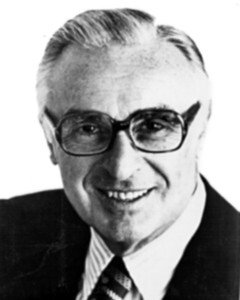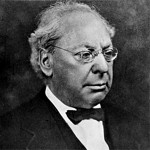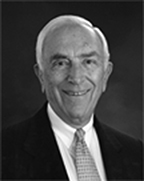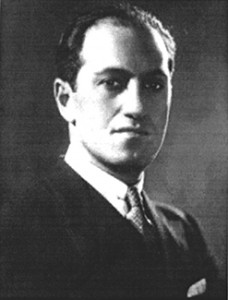During several centuries, Poland was central to Jewish history. The great-grandparents of the majority of today’s Jews were born in territories that once formed part of Poland. The traditions of modern Jews, therefore, are deeply grounded in the history, culture, and customs of Polish Jews. The important cultural, social, and national movements of our time—Hasidism, Haskalah, and Zionism—came into full fruition and development in Poland.
Jews first came to Poland from Asia Minor and settled on the shores of the Black Sea at the beginning of the Common Era. From there they spread northward. In the 8th century they succeeded in converting the ruling classes of the Khazars, who dominated a large territory between the Volga and the Dnieper rivers, north of the Black Sea. When the Mongolians invaded Eastern Europe in 1240, many Jews (and many Khazars) fled to Poland and eventually settled there. Most of the Polish Jews, however, came later from Germany. They brought with them a German dialect mixed with Hebrew words which they had used for hundreds of years. This vernacular developed into Yiddish, the universal language of Polish Jewry.
Thus, a substantial, permanent settlement of Jews began in Poland at the end of the 12th century. Some of them became the mint-masters of Polish kings. Since apparently at that time Jews were the only merchants in Poland, these mint-masters stamped their coins with Hebrew inscriptions. Jews were useful in the Polish economy; therefore, the kings made a strong effort to attract large numbers to settle in Poland. In 1246, Boleslav the Pious issued a favorable charter offering privileges to Jews based on the Charter of Privileges issued in 1244 by Duke Frederick of Austria. This charter, which became the cornerstone of Polish Jewish legislation, allowed Jews to organize themselves into autonomous communities and regulated the business relationships of Jews and Gentiles in a manner favorable to the former. The charter protected Jews against hostile Christian clergy, guaranteed the inviolability of their life and property, and assured their protection while transporting their merchandise and carrying on their business.
At the end of the 13th century, life became difficult for German Jews, and many migrated to Poland. In 1344, Casimir the Great reaffirmed the charter of Boleslav and extended further privileges to Jews in his kingdom. In the following years during the Black Plague, Poland became a refuge for Jews of Germany who were either massacred or driven out of the towns in which they resided. They began to stream into Poland in large numbers. Germany was practically emptied of its Jewish population, and Poland became the great center of Yiddish-speaking Jews.
In the late 14th century, when Jagello, Duke of Lithuania, married the heiress to the Polish throne, Lithuania became part of Poland. Jews who had settled about the same time in Lithuania and Poland were now united under one ruler. With few exceptions, the Polish kings treated Jews well and protected them against hostile clergy, German merchants, and artisans who had settled in the larger towns. Poland was an agricultural country, its land divided into large estates worked by serfs for the benefit of the nobility. Jews served the nobility as managers of their estates, buyers and distributors of their excess farm produce, financial agents, tax farmers, and suppliers of luxury articles. Although few Jews became rich, they lived comfortably, married young, reared large families, and devoted their time and energy to the study of Torah and Talmud.
Jews were organized into autonomous communities, each community having full jurisdiction over its members. The Polish government levied a single tax on all Jews of Poland. It was up to Jews to apportion this sum among the various communities. It became necessary to establish a council made up of outstanding rabbis and heads of important communities in order to represent them before the government. This council was charged with the task of negotiating the amount of the tax due to the government, collecting the tax from the various communities, and protecting the rights and interests of Polish Jewry. In the 16th century this representative body was known as the Council of the Three Lands, since it represented the Jews of Poland, Lithuania, and Polish Russia. In the 17th century a Council of the Four Lands, representing the Jews of Great Poland, Little Poland, Podolia (including Galicia), and Volhynia was established. The members of the council met twice yearly at the great fairs of Lublin and Jaroslav. In addition to managing communal affairs, the Council acted as the supreme court of the Jewish communities, settling disputes and enacting necessary ordinances. They also supervised elementary education and the yeshivot, or Talmudic academies.
Jewish learning flourished in Poland. There was hardly a home where the Talmud was not studied. Yeshivot were established in many important cities, and the world-famous Talmudic scholars who taught there attracted hundreds of students from far and wide. Among these scholars were Shalom Shakhna (1500-1558), who established the famous yeshiva of Lublin; Moses Isserles (1530-1572), whose notes on the Shulhan Arukh made it the accepted code of Jewish law for Polish Jewry; Solomon Luria (1510-1573), author of an important commentary on parts of the Talmud; Mordecai Jaffe (d. 1612), author of a great code of law; Joshua Falk (d. 1614), great commentator on the codes of Jacob ben Asher and Joseph Karo; Meir of Lublin (d. 1616); Samuel Edels (d. 1631); and Joel Sirkes (d. 1640).
Modern Period. In the second half of the 17th century, the Cossack uprisings led by Chmelnicki, and subsequent wars with Sweden and Russia had catastrophic effects on Polish Jews. Numerous communities were completely destroyed. Tens of thousands of Jews perished; many fled to neighboring countries. When order was restored, the remaining Jews, joined by returning refugees, reestablished their communal life. Through legislation, King Jan Casimir helped to improve the economic status of the Jewish population in the devastated regions.
However, the recovery of Polish Jewry was not complete. They were constantly exposed to the accusations of the Church and the anger of the mob. The general anarchy which engulfed Poland in the 18th century further aggravated the Jewish position. Efforts of the Council of the Four Lands to reopen the once famous yeshivot were only partially successful. The suffering masses sought consolation in mysticism and in illusions of redemption. The Messianic movement led by Sabbatai Zevi stirred the imagination of considerable numbers of Polish Jews who believed that the day of deliverance was near. Even after they were disillusioned in the false Messiah, many Polish Jews remained in the grip of mysticism. Some followed the adventurer Jacob Frank, who proclaimed himself a successor to Sabbatai Zevi. In the middle of the 18th century the quest of Polish Jewry for spiritual fortitude and a glowing faith was realized in Hasidism. The movement attracted many adherents. It preached contentment and cheerfulness and imparted a sense of importance to simple people who were scorned or ignored by scholars.
Throughout the 18th century, Jews of Poland, which included Ukraine and White Russia, were almost constantly terrorized by their Christian neighbors. Subjected to the hostility of the church and the whims of local rulers and landowners, the life of the Jew was at times intolerable. The frequent blood accusations and riots lasted until the final partition of Poland by Russia, Prussia, and Austria in 1795. In the rebellion against foreign rule led by Kosciusko, Berek Joselovic, heading a Jewish legion in 1794, fought on the side of the Poles. In 1807, Napoleon formed part of the country into the Duchy of Warsaw, a demarcation which lasted for eight years. The Jewish situation was only slightly changed during this period. The majority of Jews in the partitioned provinces of Poland became part of Austria and Russia, sharing the general lot of their brethren in these two countries. Jews of Galicia became, in 1782, subject to the Edict of Tolerance issued by the Austrian Emperor Joseph II. This edict endeavored to foster assimilationist tendencies among Jews. Although the Revolution of 1848 secured equal rights for the Jewish population, economic discrimination lasted until the outbreak of World War I.
A number of Jews living under Russian rule identified closely with the Polish cause. They participated in the revolt of 1830-31, forming a regiment which defended the city of Warsaw against Russian attacks. In 1863, led by Rabbi Dov Berish Meisels, head of the Jewish community in Warsaw, they took active part in an unsuccessful attempt to overthrow Russian rule.
Due to their devotion to the cause of Polish national liberation, Jews of Russian Poland fared poorly during the 19th century. They suffered at the hands of Russian oppressors and Polish oppressed alike. However, the difficult economic and political plight of Polish Jewry did not hamper its spiritual and cultural growth. In addition to being a stronghold of Talmudic scholarship and Hasidism, it became, in the late 19th century, fertile ground for the Haskalah, or Enlightenment, movement. Some of the best-known Hebrew writers and scholars were active in the Jewish centers of Poland, especially in Warsaw. These included Hayim Selig Slonimski, a scientist and inventor who edited Ha-Tzefirah, and Nahum Sokolow. Other scholars and writers were J.L. Peretz, David Frischmann, Sholom Asch, Simon Berenfeld, Samuel Abraham Poznanski, Moses Schorr, Meyer Balban, and Ignaz Schipper.
Attacks and persecution of Jews followed the establishment of Poland as an independent state after World War I. Minority rights for Polish Jews were secured in the peace treaty of Versailles. With the inclusion parts of White Russia and Galicia in the new Poland, the Jewish community became one of the largest in the world, numbering more than 3 million. The national, economic, and political rights of the Jewish population were rigorously pursued by Jewish representatives in the Polish Sejm, or Parliament. Despite vicious antisemitic propaganda, economic restrictions, and the often hostile government policy, Jewish national and cultural life in Poland flourished. All parties—the Zionists, the Jewish Socialist Bund, Agudath Israel, and Mizrachi—had a large following among Polish Jewry. Polish Jewry served as a main source for Palestinian pioneers. Jewish schools in which the language of instruction was either Hebrew, Yiddish, or Polish were opened in every Jewish community by various political and religious factions. The Yiddish press exerted great influence on the Jewish masses. There were Yiddish dailies, outstanding among them being Haint and Moment. There were close to 200 periodicals in Yiddish, Hebrew, and Polish, all devoted to Jewish affairs.
The most prominent Jewish political leaders were Isaac Gruenbaum, Joshua Thon, Leon Reich, Emil Sommerstein, and Ignaz Schwarzbart, the only Jewish representative in the Polish Government in Exile during World War II in London.
Just before World War II, the antisemitic movement in the country assumed a more threatening character. A new Polish party called O.N.R. openly advocated Nazi-style extermination of Jews. Attacks on Jews became a frequent occurrence. The government concurred with the economic boycott instituted against them. Nevertheless, Polish Jewry heroically defended its rights. Even during the first few years of the Nazi occupation of Poland, when Polish Jewry was reduced to complete enslavement, it gave evidence of vitality and spiritual fortitude. The extermination of more than 3 million Polish Jews from 1942 to 1945 is one of the greatest tragedies in Jewish history. Only a few hundred thousand survived the Nazi slaughter. The story of the revolt of the Warsaw Ghetto and the resistance of Jewish partisans and ghetto fighters in other parts of the country are heroic chapters in the annals of Jewish martyrdom and courage.
After the war, only about 60,000 Jews remained in Poland; thousands who survived Soviet exile and Nazi camps fled to Israel. Spurred by a renascence of antisemitism in the new Communist Poland, another exodus began late in 1956, and more than 35,000 Jews left, almost all of them for Israel. At the same time, about 19,000 Jews of Polish origin were repatriated from the Soviet Union. About two-thirds of them re-emigrated to Israel.
In 1982, there was a resurgence of antisemitism in Poland after the introduction of martial law. Jews were accused of being key leaders in Poland’s anti-Soviet Solidarity movement. In 2007 there were approximately 25,000 Jews in all of Poland, although some sources claim that tens of thousands of Jews in Poland, born after World War II, have yet to come to terms with their Jewish identity.
Of the more than 900 Jewish cemeteries in Poland, the majority were destroyed and expropriated, mostly after the war. An international rabbinical group, under the leadership of Rabbi S. Halberstam of Bobov, has been active since 1978 in restoring and renovating at least some of them. Rabbi Chaskel O. Besser of New York was instrumental in these and other activities.
For the past few years, the Ronald S. Lauder Foundation has succeeded in bringing new life into Jewish activities in Poland, including a kindergarten in Warsaw, summer and winter camp programs for Jewish youth, religious and cultural activities, and the reestablishment of a rabbi in Warsaw.
Filed under: PN-PZ by admin
No Comments »




